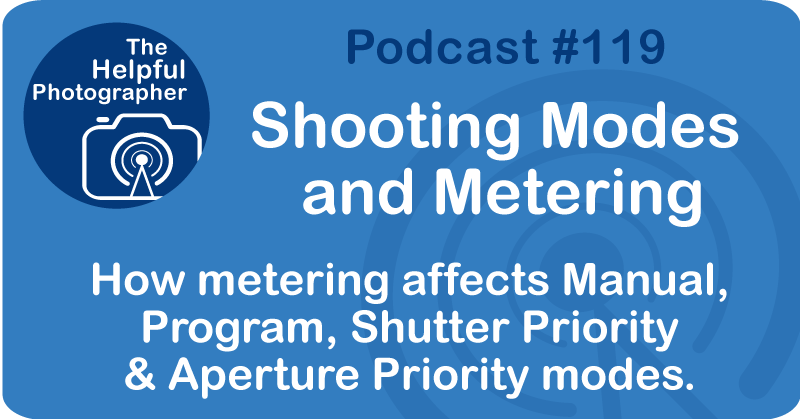Shooting Modes and Metering #119
Shooting Modes and Metering #119

The biggest complaint bloggers have against using auto is that auto renders a middle gray exposure. And my response is, well, no kidding. That's what it's supposed to give you, and that's about what you want 95% of the time. And there's a failure to understand that all metering modes are supposed to render a middle gray exposure. No matter what mode you're shooting in, you are going to get a middle ground reading on the thing that is being metered. So what about manual mode? Yes, you're going to get the same reading and therefore the same exposure there too. That is, if you're following what your camera meter tells you to do. Which means that you are putting your exposure dead in the middle. When you do that, you are doing the same thing all of the other modes are doing exposure wise. It's the same thing. I know everyone's going nuts right now. Just relax for a second. I will talk about shutter speed and aperture choice. I'm just talking about exposure. What if you don't want a middle gray exposure? Well, that's fine. If you're shooting a manual, then you can over or under expose your shot by mismatching your f-stop, shutter speed, or ISO away from what the meter tells you to do. And yes, I said mismatch. In other words, you do not do what the camera tells you to do. You actually move your settings so that your meter tells you that you are under or over exposed. If you are shooting in program, shutter priority, or aperture priority, you can still over or under expose your shot by exposure compensating. Nothing says that you must stick to a middle ground exposure, but I would caution everyone to be very careful when you are doing this. The camera is right the vast majority of the time and generally speaking, it is very infrequent that you would need to move away from a middle gray exposure. So when would you want to over or under expose your shot? If you are shooting in a very dark setting, a middle gray exposure is going to render your image overexposed and you will want to push the camera to an under exposure. On the other hand, if you're shooting a very bright subject, your camera is likely to underexpose, so you would want to push your camera to an overexposure. To better understand this, simply point your camera into your dark closet and take a photo. You will see that it is rather overexposed looking. Then point your camera at the sun and you will see that it is rather dark. The reason is because your camera is trying to average out the light. Dark scenes go light while light scenes go dark. It is exactly what the camera is supposed to do. Many see this as the camera somehow failing.
While most people believe that shooting modes and metering modes are the same, they are not. Your shooting modes, manual, aperture priority, shutter priority, and program work based on the metering mode you set, whether that is spot, center, or wide area metering. No matter what shooting mode you choose, you have to have the wherewithal to override the system, if you want something other than middle gray. In other words, just shoot in manual or just shoot in auto will not fix this problem. With regards to keeping control of your shutter speed and aperture, I addressed those issues in episodes 68 and 20. Although there are good reasons to shoot in manual, for most people, it's a bad or unnecessary choice. For more information about metering modes, check out episode 59, 60, and 92.











